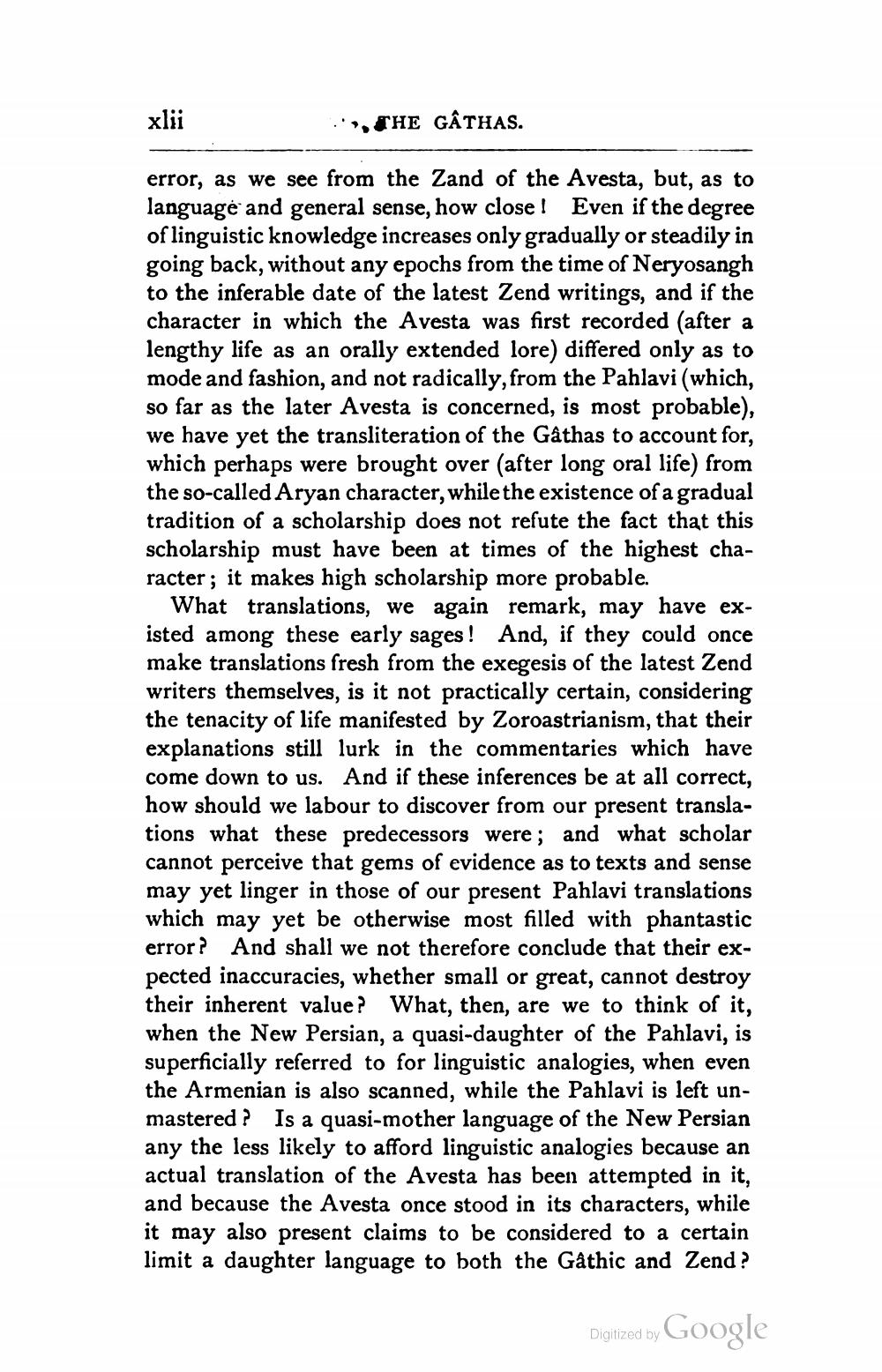________________
xlii
..,, THE GÂTHAS.
error, as we see from the Land of the Avesta, but, as to language and general sense, how close! Even if the degree of linguistic knowledge increases only gradually or steadily in going back, without any epochs from the time of Neryosangh to the inferable date of the latest Zend writings, and if the character in which the Avesta was first recorded (after a lengthy life as an orally extended lore) differed only as to mode and fashion, and not radically, from the Pahlavi (which, so far as the later Avesta is concerned, is most probable), we have yet the transliteration of the Gathas to account for, which perhaps were brought over (after long oral life) from the so-called Aryan character, while the existence of a gradual tradition of a scholarship does not refute the fact that this scholarship must have been at times of the highest character; it makes high scholarship more probable.
What translations, we again remark, may have existed among these early sages! And, if they could once make translations fresh from the exegesis of the latest Zend writers themselves, is it not practically certain, considering the tenacity of life manifested by Zoroastrianism, that their explanations still lurk in the commentaries which have come down to us. And if these inferences be at all correct, how should we labour to discover from our present translations what these predecessors were; and what scholar cannot perceive that gems of evidence as to texts and sense may yet linger in those of our present Pahlavi translations which may yet be otherwise most filled with phantastic error? And shall we not therefore conclude that their expected inaccuracies, whether small or great, cannot destroy their inherent value? What, then, are we to think of it, when the New Persian, a quasi-daughter of the Pahlavi, is superficially referred to for linguistic analogies, when even the Armenian is also scanned, while the Pahlavi is left unmastered? Is a quasi-mother language of the New Persian any the less likely to afford linguistic analogies because an actual translation of the Avesta has been attempted in it, and because the Avesta once stood in its characters, while it may also present claims to be considered to a certain limit a daughter language to both the Gâthic and Zend?
Digitized by Google
Digitized by




